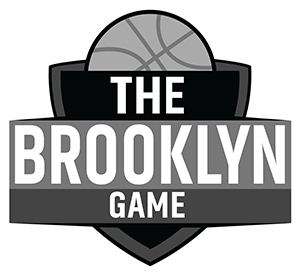
Despite an underwhelming NBA career, O’Bannon had a studly college run in Bruin Blue. The UCLA star won the 1995 John R. Wooden Award — basketball’s version of the Heisman — en route to a national championship and NCAA Final Four Most Outstanding Player honors. Now that it’s NCAA Tournament time, Dave D’Alessandro of the Newark Star Ledger caught up with the 9th overall pick from the 1995 draft to discuss his NBA days, life as a car salesman, and challenging the economic system of a multi-billion dollar industry.
O’Bannon once thought he would have a lengthy NBA career, but a balky knee “pretty much made me a defensive liability as soon as I showed up in Jersey,” he admitted. And before long, his confidence was “in the tank, so my coaches —- Butch Beard and John Calipari —- lost confidence in me.”
The Nets would trade O’Bannon to the Mavericks midway through his second season, where he would be released after 19 games. He then spent the next seven years playing in five different countries before retiring from basketball to settle into his new life as marketing director for a Toyota dealership in Henderson, Nevada. He’s now living happily 10 miles outside of Vegas as a “modest and congenial fellow,” who watches the NCAA men’s basketball tournament on TV just like the rest of us.
Except the rest of us aren’t suing the organization that runs the “$770 million annual cash machine known as the NCAA Tournament.” In 2009, the former Net noticed that “his UCLA Likeness was being used on a college basketball video game, and wondered how the NCAA could reap profits without compensating those whose talent actually generates those profits — not only on the field and on the court, but in licensed products.”
Three years after the anti-trust suit was filed against the NCAA and EA Sports (the video game company), the NCAA and UCLA still claim they own O’Bannon’s likeness because of a legal release signed when he was 17. The standards clause of that document actually says “forever and throughout the universe.”
“A 17-year-old kid doesn’t know what he’s doing, and to sign something of that magnitude without legal representation is manipulation the second you’re handed the pen,” O’Bannon said. “When you sign a letter of intent, you just want to play ball — that’s where my mind-set was.”
What started as a suit born of O’Bannon’s anger has grown into a massive civil action lawsuit, claiming billion dollars of damages, and includes none other than NBA legends Oscar Robertson and Bill Russell among the plaintiffs. “I once sold Bill Russell two cars, long before this ever happened,” O’Bannon said with a short laugh. “I’m honored they have joined the suit.”
The suit has branched out far beyond what O’Bannon expected, including a recent motion which seeks to change how current players are compensated for the use of their likeness. Basically, the system would work as such (from Grantland’s Charles Pierce)
“You get the scholarship, we get your work and the gate revenues derived from it. But, if you play well enough that we can sell your jersey or your picture — or, more controversially, if you play well enough that we rake in the big TV money — you get a good slice of those extra revenues, which we will put into a temporary trust for you after you graduate, and from which you will continue to profit as long as we still use your likeness.”
The NCAA has made modest (read: laughable) concessions, allowing student athletes a $300 yearly stipend, but the fight in court rages on. In February, U.S. District Court Judge Claudia Wilken denied the NCAA’s motion to throw out the case based on the plaintiffs’ changed legal strategies. In June, the San Francisco court will begin certification hearings to determine if the trial will continue as a class action suit.
While the case is far from over, if Ed O’Bannon et al. win the case it would change the fundamental nature of the current NCAA economic structure. As Pierce put it:
“For the NCAA to survive in its current form, it has to win this lawsuit or get the lawsuit dismissed. There’s no third alternative. The NCAA can’t settle and then go back to the status quo ante. It can’t pay off O’Bannon and Russell and Robertson and all the rest of them, and then start business as usual again as regards Cody Zeller or Kenny Boynton.”
And to think, a billion-dollar industry could be taken down by a car salesman from Nevada who struggled to find a role on a 30-52 Nets team. “I appreciated the free education, and I’m proud to have my degree. But with the amount of money that’s brought into each institution and the imbalance in compensation, there’s just something wrong with this picture.”
Read More: NJ.com Dave D’Alessandro – – Lawsuit filed by former Nets forward Ed O’Bannon threatens NCAA’s economic model
Read More: Charles P. Pierce Grantland — The O’Bannon Decision


















